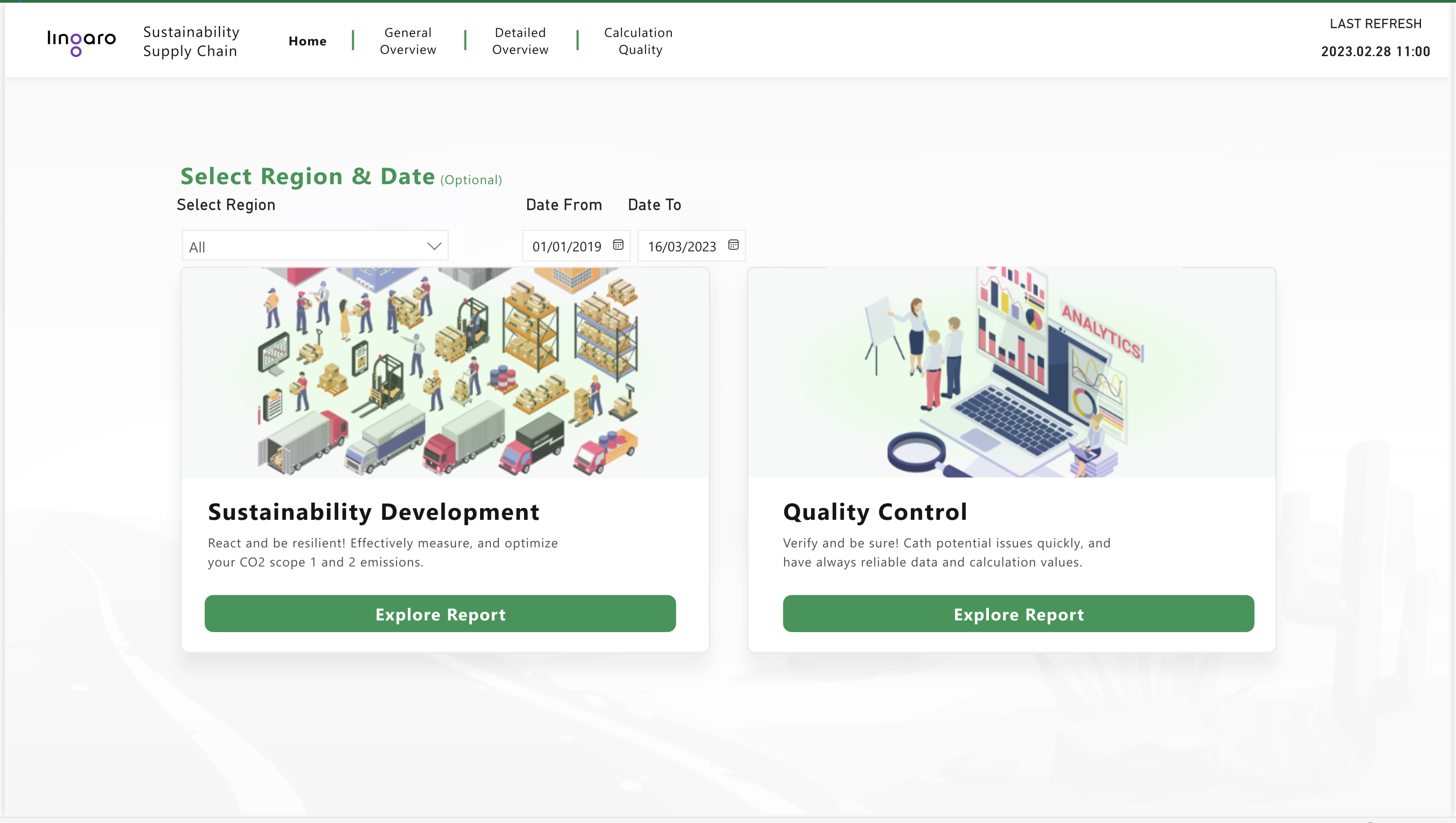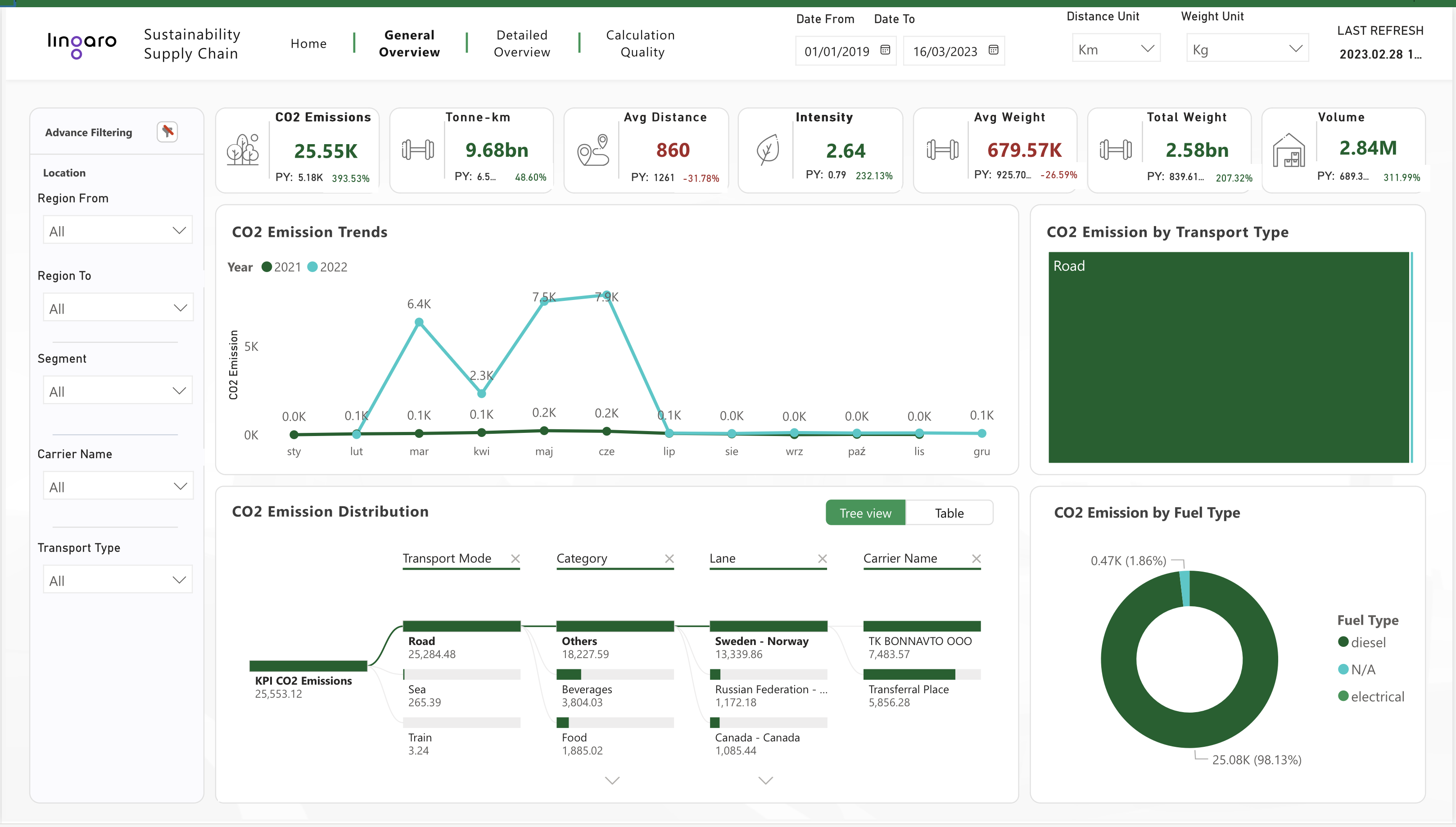More and more consumers, governments, and nonprofits are pushing to slow down climate change. Businesses that used to externalize costs are now finding themselves having to account for their impact to the environment and shift toward more sustainable practices. However, both of these things are easier said than done — and not walking the talk leads to greenwashing. To prevent this, companies need to be transparent about their sustainability efforts, something that analytics can help with.
Not too long ago, businesses didn’t need to mind their impact on their surroundings. Power plants spewed soot and smoke that led to smog, acid rain, and respiratory diseases. Manufacturing facilities near rivers took clean water for production purposes and belched toxic wastewater downstream. Lumber and mining companies tore down hectares of rainforests without regard to the species they’ll eradicate.
Now, we’re becoming more aware that our actions are contributing to more frequent flash floods, longer droughts, more devastating storms, and rising sea levels. One critical way in which individuals can do their part in helping Earth recover is by choosing eco-friendly companies. Unfortunately, many companies mislead consumers via greenwashing.
“Greenwashing” involves making unsubstantiated, incomplete, false, or misleading claims about being eco-friendly and having a positive impact on the environment. The coinage of this term is attributed to American environmentalist Jay Westerveld, who, in an essay, criticized hotels that asked guests to reuse towels before having them washed. According to the Westerveld, the money spent on increasing awareness for the supposed green initiative would have been better spent on efforts to reduce its harmful impact on the environment, such as by switching to more eco-friendly laundry detergent.
Here’s a nifty guide for owners and managers to follow.
Greenwashing example #1: Vague or misleading language
Brands use words like “natural” or “organic” that evoke being eco-friendly but either don’t show how they are being so or paint an inaccurate picture. For example, SC Johnson received flak for claiming that its Windex Vinegar Glass Cleaner was made from “100% ocean plastic,” which made it seem that they obtained and recycled plastic that was obtained directly from the ocean. While their press release did clarify how they actually source the plastic, consumers who were unaware of this won’t necessarily think that “ocean plastic” actually meant “ocean bound plastic.”
What being green really looks like: Clear labeling, verifiable data, and third-party audits and accreditations
Companies must use clear, simple, and accurate language in their labels when describing their products. SC Johnson has updated its label to claim that its Windex bottles are made from 100% ocean-bound plastic. Also, sharing specific and verifiable details helps engender trust among consumers. “Our paper is made of 40% virgin pulp and 60% recycled paper” is much better that “Made with recycled paper.”
Greenwashing example #2: False or dubious endorsements
Some products have labels that look like endorsements from independent third parties, but those parties either don’t exist, are not accredited, or have questionable trustworthiness when it comes to upholding sustainability.
For example, the Roundtable of Sustainable Palm Oil (RSPO) garnered controversy. While agencies such as the World Wildlife Fund supports the RSPO as a certifier of sustainable palm oil plantations, NGOs like the Rainforest Action Network sees RSPO as a body that merely gives a green sheen to palm oil producers that destroy forests and commit human rights abuses.
What being green really looks like: Trustworthy third-party audits and accreditations
Instead of just making customers take their word, businesses can have third parties audit them, certify them, and speak on their behalf. An example of an internationally respected environmental standard is the ISO 14001. An ISO 14001 certification indicates that a company fulfills the requirements for setting up and running an environmental management system — a system that “helps organizations identify, manage, monitor and control their environmental issues in a ‘holistic’ manner.”

Figure 1. Aerial view of palm oil plantation beside a forest; in Indonesia, for instance, palm oil producers were reported to be burning forests to clear land for their plantations.
Greenwashing example #3: Insincere assertions
Companies tout sustainability efforts while still profiting from unsustainable practices. For example, H&M may recycle fabrics and source organic cotton in its Conscious initiative, but it remains to be a purveyor of fast fashion, which promotes the disposability of clothing and increases textile waste globally. Another example is HSBC’s ads that painted the bank as climate-friendly while still heavily financing fossil fuel companies. Protesters didn’t buy this. Neither did the Advertising Standards Authority.
What being green really looks like: Cleaner operations
Businesses must do the actual work of becoming greener and more sustainable. Lingaro’s supply chain analytics practice, for instance, worked with a multinational fast-moving consumer goods company to reduce their emissions in their freight operations, which not only strengthened their sustainability efforts, but also optimized their business processes. Decarbonizing your entire supply chain also helps in fulfilling voluntary sustainability frameworks and complying with regulations.
Greenwashing example #4: Incomplete or outright false claims
Brands might say that their products are recyclable or sustainably sourced even when that’s not entirely true. For instance, Keurig Canada boasted that its coffee pods were recyclable, but failed to mention that only Quebec and British Columbia had the recycling facilities that can accept those pods. Canada’s Competition Bureau fined the company CA$3 million for making the misleading claim.
Another glaring example was Ryanair’s ads which claimed that it was Europe’s “lowest emissions airline.” According to the Advertising Standards Authority, the ads lacked sufficient evidence and were misleading, and thus needed to be banned.
What being green really looks like: Transparency
Truly green companies show their impact to the environment. They provide links to webpages on their sustainability projects, share specific goals and timelines, and submit regular reports on the status of their efforts. For example, Volkswagen admitted to cheating emissions tests in 2015, but has since increased its efforts to be green — and to be transparent about it.
Businesses often want to look as good as possible all the time, but as we’ve seen so far, this leads to greenwashing, which backfires on them. When being transparent, businesses must not be afraid to look a bit dirty in the beginning since transitioning toward becoming sustainable does not happen overnight. In fact, businesses can be honest about its shortcomings and make up for these by doing carbon offsetting and other similar measures.
How greenwashing affects businesses
When companies begin to clean up their act by investing in initiatives such as installing solar panels, avoiding the use of pesticides, and replacing single-use plastic items with eco-friendly alternatives, they increase the outflow of money from their coffers. This takes the form of additional costs or investments, such as Unilever’s thrust to develop alternatives for palm oil and other cleansing ingredients that are derived from fossil fuels. Naturally, for-profits must make up for the money outflow by putting a premium on their green offerings — and 64% of consumers in the US are willing to pay more for these. Another study showed that one third of customers across 17 countries are willing to pay a 25% premium so that they can “put their money where their mouth is” when they espouse climate-friendly beliefs.
And while product quality remains to be the primary driver of customer loyalty, having sustainable business practices is also a significant factor. In fact, 77% of executives who responded to Capgemini’s Consumer Products and Retail survey said that “sustainability approaches increase(d) customer loyalty.”
Negative consumer reaction
Consumers who pay a premium for sustainable products are likely to see greenwashing as a money grab and a betrayal of their trust. In a study, 48% of respondents claimed that they would buy a product or service as little as possible from a company that was not living up to their claims of being sustainable. Furthermore, 40% would not recommend the product or service to family and friends, even if the former liked the product or service.
Another study shows that consumers feel that making informed purchasing decisions is difficult because information on whether an eco-friendliness claim is greenwashing or is not readily available and accessible. This means that the market on its own will be slow to shift towards sustainability since consumers can’t easily tell between truthtellers and greenwashers.
Regulatory penalties and lawsuits
There are two nonmarket mechanisms that can punish a company for greenwashing: regulatory penalties and lawsuits. In addition to mandatory sustainability regulations, laws on deceptive advertising, unfair commercial practices, and climate and the environment can punish greenwashers. Examples of the latter include:
-
France’s Climate and Resilience Law
-
European Union's proposed Unfair Commercial Practices Directive
-
The US’ state and federal consumer protection statutes as they relate to the Green Guides
-
The US’ potential revision of the Green Guides
Consumers and government agencies can also bring companies to court for misrepresenting the eco-friendliness or sustainability of their products or services. Below are examples of class action lawsuits:
-
Burt’s Bees Cosmetics is accused of falsely labeling products as 100% natural and safe.
-
BlueTriton Brands and Niagara Bottling is accused of mislabeling their water bottles as 100% recyclable.
-
KLM is accused of misleading consumers into believing that flying KLM won’t exacerbate the climate crisis.
Lawsuits not only stain the reputation of companies. They could also have painful financial repercussions. For example, BNY Mellon agreed to pay a US$1.5 million penalty after it was charged by the SEC for purportedly making omissions and misstatements in its claims regarding its environmental, social, and governance funds.


Figure 2. Sample visualizations of Lingaro’s analytics solutions that help businesses keep track of their sustainability performance, making it easy for them to be transparent to all of their stakeholders and regulators.
Preventing greenwashing with analytics
Since greenwashing is basically about misrepresenting one’s eco-friendliness, being transparent and accurate helps solve this problem. This is where analytics shines.
If, for instance, your company aims to be carbon-neutral, the first step is to assess your supply chain and determine where emissions come from. From procuring raw materials and manufacturing, shipping, storing, and distributing goods to delivering them to the end-consumer, there are points where emissions data can be gleaned to form what is called your carbon footprint. To calculate your emissions, you can use methodologies like the ISO 14064-1:2018 standard or the Greenhouse Gas Protocol Corporate Accounting and Reporting Standard.
Changes can then be made to systems and processes to start reducing emissions. You can install solar panels to power your premises and switch out fossil-fuel powered machines and vehicles with battery-powered ones. You can replace old bulbs with energy-efficient ones. You can choose suppliers with the best sustainability certifications.
Measuring the effects of the changes and being audited by reputable third parties lead to clear and trustworthy presentations of your sustainability efforts. However, gathering, cleaning up, and analyzing so much data is too difficult and time-consuming to do without analytics tools. Not only can these tools provide you with a bird’s eye view of how the entire supply chain is doing, but you can also zoom in to a specific business unit to understand what drives its emissions and figure out which carbon reduction method would be the most cost effective for it.
In other cases, you can use analytics to increase efficiencies and enjoy the likely effect of also improving the eco-friendliness of your company. To illustrate, Lingaro’s transportation analytics solution helped a consumer-packaged goods company improve on-time deliveries by 12%. Moreover, by reducing the incidence of less-than-truckload shipments and maximizing vehicle fill rates, Lingaro not only reduced the client’s transportation and shipment costs, but also reduced their emissions as well.
Of course, analytics is not limited to carbon reduction efforts. To illustrate, the methods of water utilities for using sensors, satellites, smart devices, and analytics may very well be applied by water-intensive companies for water conservation efforts, water quality monitoring, and preventive maintenance of infrastructures, among other things.
Another example can be found in retail. Some of the things that analytics enables retailers to do are the following:
-
Track the use of display materials, props, and packaging materials in order to reduce waste and better implement recycling and composting programs.
-
Optimize the energy efficiency of lighting and display systems.
-
Provide information on store receipts, such as:
-
Information on how the raw materials were sourced, how the merchandise was produced, and what eco-labels or certifications the product has.
-
Carbon footprint information that shows how customers’ purchases affect the environment.
-
Information on how to recycle and properly dispose of the materials included in the purchases.
-
Ultimately, analytics helps companies be honest and transparent with their sustainability efforts, which is key to earning consumers’ trust and staying on watchdogs’ good side. And beyond avoiding greenwashing, analytics helps managers make better business decisions.
Read more about greenwashing here.



.png)



